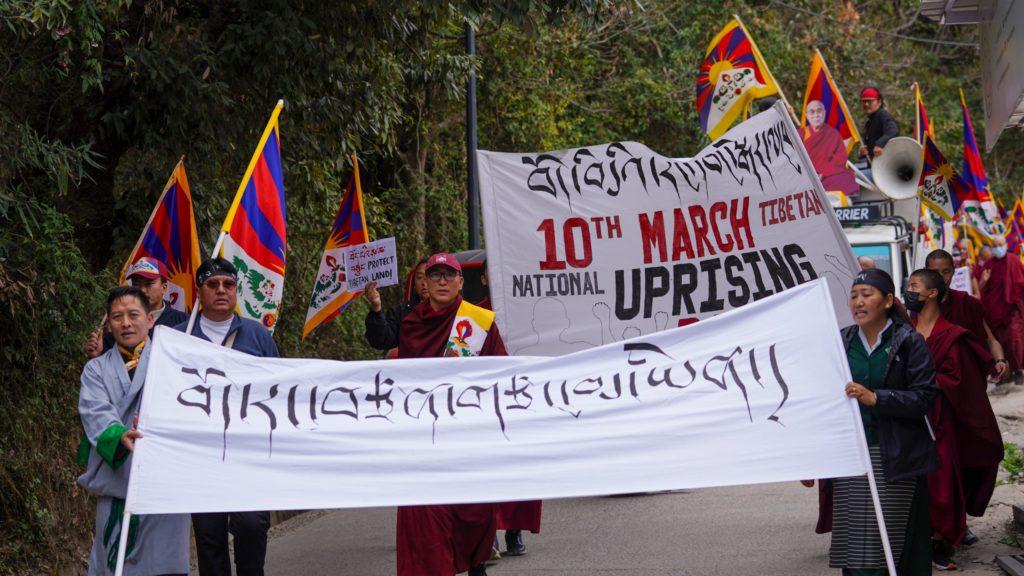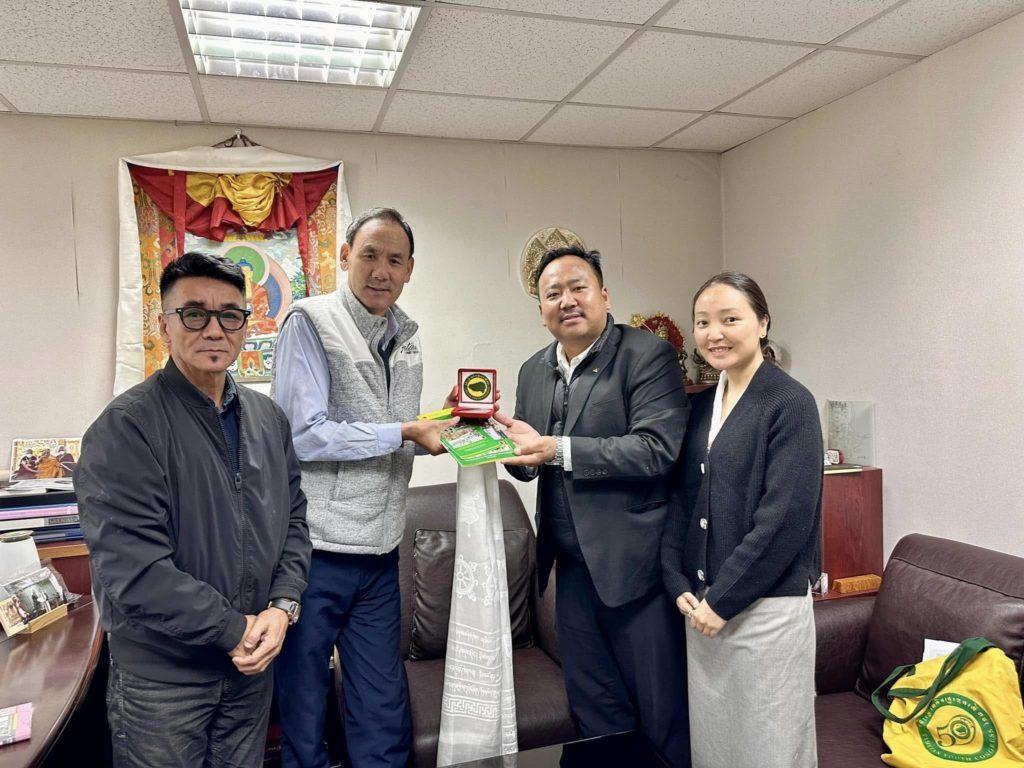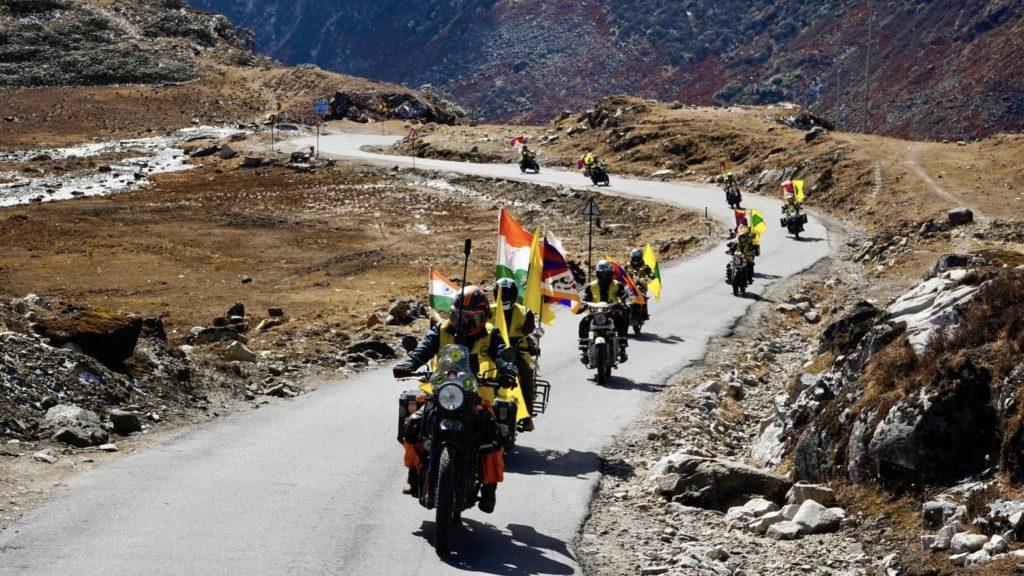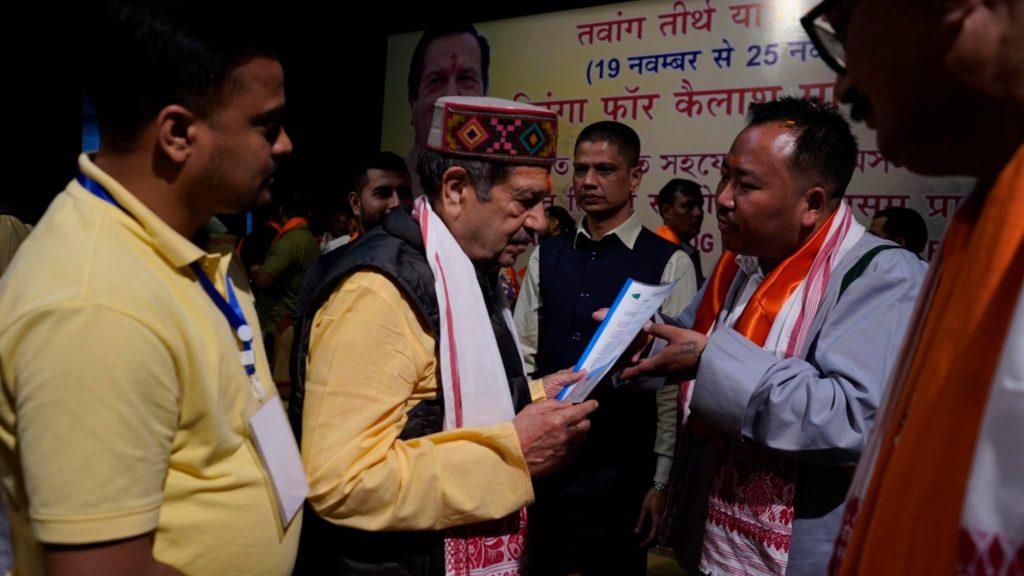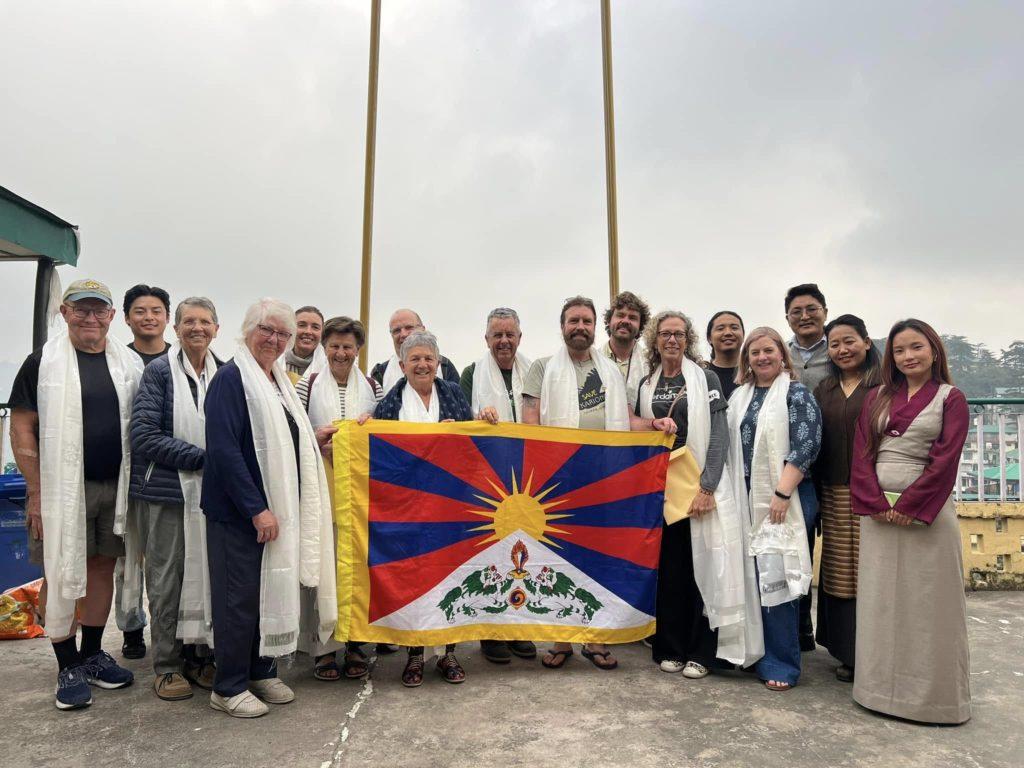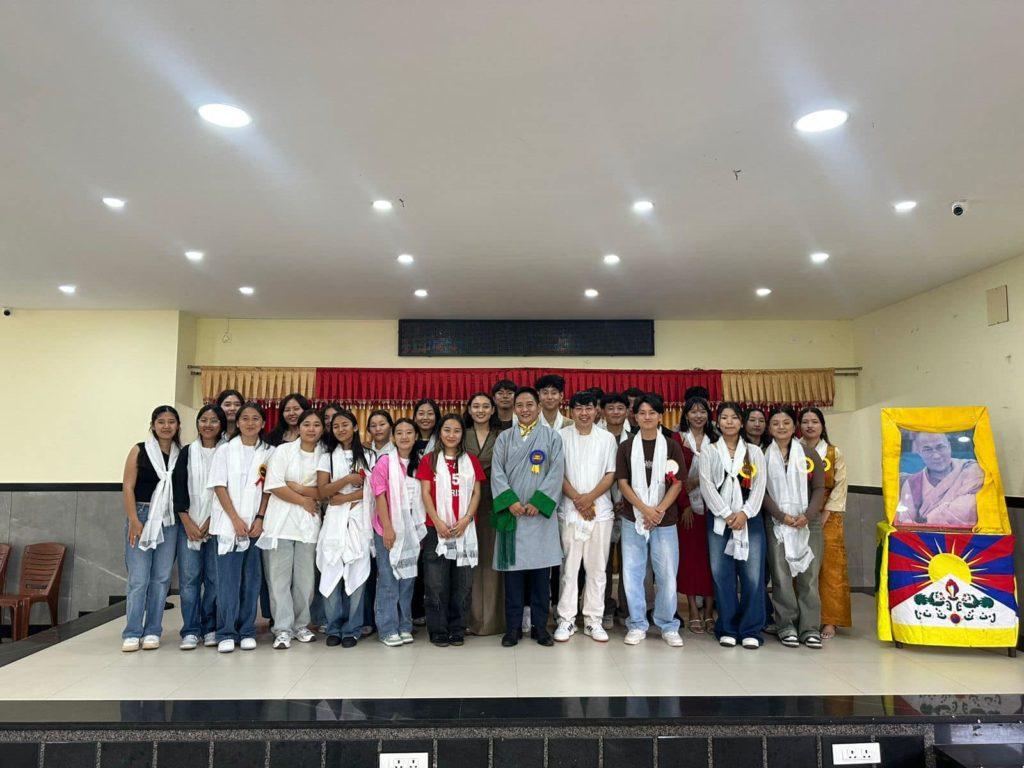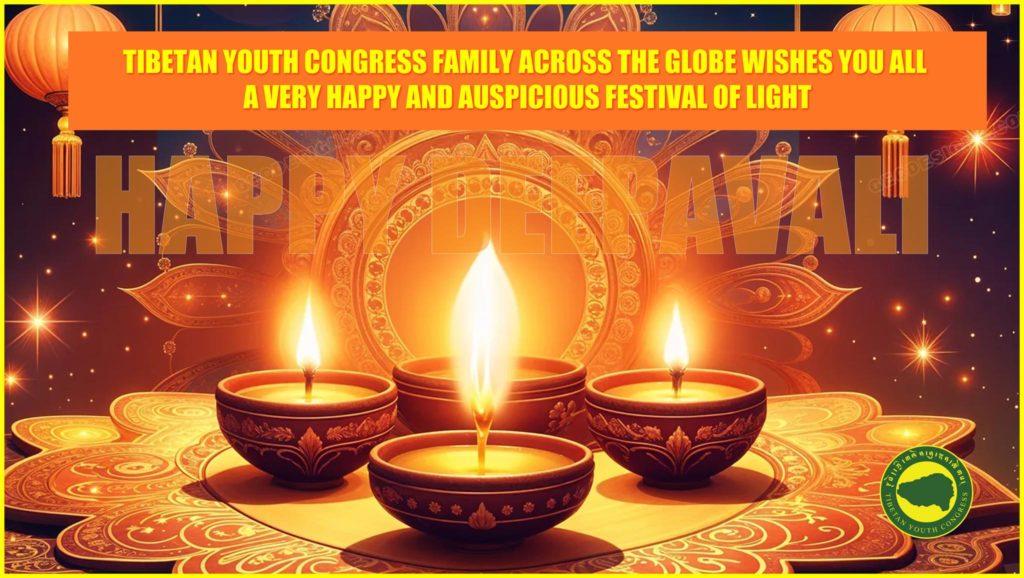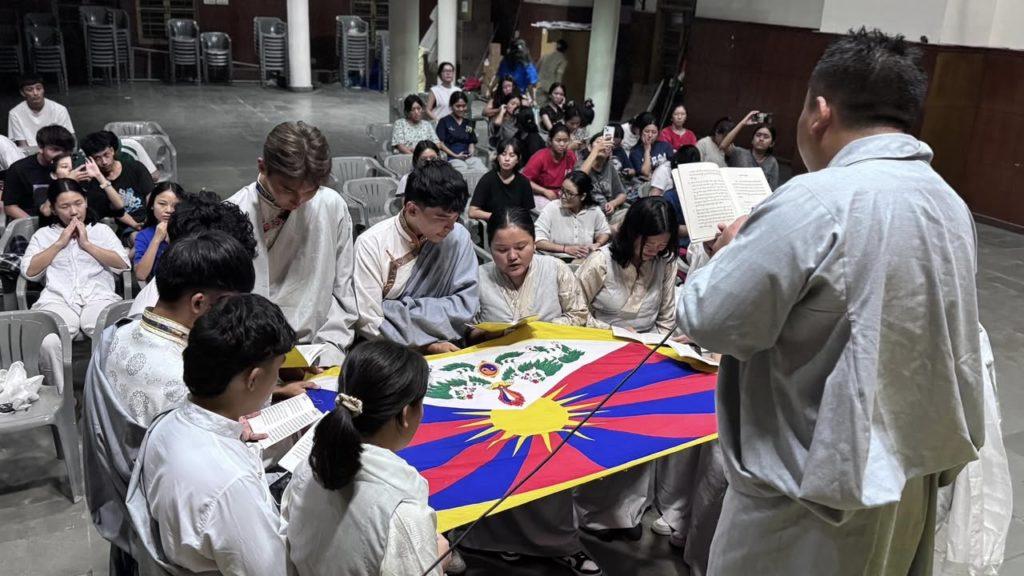Annual Activities
10th March, Tibetan National Uprising Day
On 10th March 1959, When the situation in Tibet become critical and the security of His Holiness the 14th Dalai Lama was threatened by the presence and the pressure of the Chinese Communist forces.
Tibetans from all three traditional regions rose up against the Chinese forces to denfend the historically defined sovereignty and national leader with indomitable courage and spirit of self-sacrifice, culminating in the famous Tibetan Uprising of 10th March 1959 with three famous slogans, “May His Holiness the Dalai Lama live for thousands of years!” “Tibet is an independent country!” “Chinese quit Tibet!”
Tibetans rose up against China’s illegal invasion and occupation of Tibet, and took to the streets of Lhasa, and defended the national sovereignty. Tens of thousands were killed when Chinese soldiers opened fire, but the Tibetans refused to surrender, and many risked their lives to ensure the success of the Dalai Lama’s escape into exile, where he has been a tireless advocate for his people.
Many of the participants in the Uprising were later imprisoned or executed for their actions.
Tibetans all across the globe commemorate the 10th March as National Uprising Day to remember and respect the sacrifices made by the Tibetan Men and Women who fearlessly rose up against the CCPs’ repressive rule. The 11th Panchen Lama GendunChokyiNyima was born on April 25, 1989 in Lhari County, Tibet.
11th Panchen Lama’s Birthday
On May 14, 1995, His Holiness the 14th Dalai Lama made an official statement and named the reincarnation of the 10 Panchen Lama, a six-year-old boy Tenzin GendunYeshiThrinleyPhuntsokPalsangpo(GendunChokyiNyima). Three days later, on May 17, the Panchen lama and his parents were abducted by the Chinese authorities and they have not been seen since.
Right after the abduction of the 11th Panchen Lama Gedun Choekyi Nyima, on 29th November 1995, the Chinese authorities appointed GyaltsenNorbu, their own pick as the 11th Panchen Lama, clearly violating the religious rights of the Tibetans.
Tibetan Youth Congress on its 28th Working Committee Meeting held in Phuntsokling Tibetan settlement, Odisha in 1997 adopted a resolution to mark the Birth Anniversaries of the 11th Panchen Lama with religious activities and political campaign works.
Martyr’s Day
On 10th March 1998, the Tibetan Youth Congress organized a Hunger Strike unto death at Jantar Mantar New Delhi as per the resolution adopted during the 27th and 28th Working Committee Meeting held in Mussoorie and Orissa respectively. The hunger strike coincided with the 39th National Uprising Day, and was intended on drawing global attention, thereby compelling the United Nations to implement the International Council of Jurists (ICJ’s) recommendations on Tibet. There were six hunger strikers representing the six million Tibetans. On the 48th day of the hunger strike, the remaining three hunger strikers were forcefully dragged by the Indian police. Thupten Ngodup, who had volunteered to be in the second batch of hunger strikers ran to the public toilet where he had earlier hidden a jar of petrol, poured it onto his body and set himself ablaze for the cause of Tibet. His self-immolation drew the attention of the world’s media. He suffered 90 percent burns and was declared dead two days later on 29th April 1998.
In memory of the late Pawo Thupten Ngodup and thousands of other Tibetan martyrs, the day has since been marked as the Tibetan Martyrs Day by the TYC.
Panchen Lama Arrest Day
On 17 May 1995, when he was only six years old, the Panchen Lama Tenzin GendunYeshiThrinleyPhuntsokPalsangpo(GendunChokyiNyima) was abducted by the Chinese Communist government along with his family after His Holiness the 14th Dalai Lama recognized him as the reincarnation of the 10th Panchen Lama. Their whereabouts are still unheard of and have not known since then. Tibetan Youth Congress on its 42nd Working Committee Meeting adopted a resolution to observe the day annually with demands of his unconditional release.
17 Point Agreement 1951
On 23rd May 1951, the 17 Point Agreement was forced upon Tibet by China, which had defeated Tibetan forces in the eastern part of the country and was threatening full-scale war in the rest if a delegation sent by the Tibetan government to negotiate in Beijing did not signed the said agreement. For the next eight years His Holiness the 14th Dalai Lama tried to abide by the agreement terms, but China on the other hand, showed no inclination to honour its own part of the “agreement”. The People’s Liberation Army (PLA) immediately set out to inflict unbelievable atrocities upon the Tibetan people in order to hasten the occupation of Tibet and destruction of its distinct identity. Owing to which, the “17 Point Agreement” was repudiated by His Holiness the 14th Dalai Lama on his arrival in India, as the agreement having been “thrust upon Tibetan government and people by the threat of arms.
Tibetan Youth Congress adopted a resolution on its 6th General Body Meeting held in Dharamshala to mark the date. Again on 23rd May 1990, Tibetan Youth Congress on its 21st Working Committee Meeting adopted a resolution to contribute 5 rupees from each member to the Tibetan Youth Congress Centrex as mark of protest against the 17 point agreement.
World Environment Day
After the illegal occupation of Tibet in 1949, due to the Chinese government’s policies, Tibet has suffered from massive deforestation, mining, and damming projects all contributing to the deterioration of the Tibetan environment, also known as the “Third Pole”. China’s hydro-damming and mineral extraction in Tibet combined with climate change, threaten to destroy Tibet’s unique ecosystem, disrupting life for a billion people downstream and across Asia. Therefore, Tibetan Youth Congress on its 43rd Working Committee Meeting held from 8th August to 12th August 2012, adopted a resolution to organize campaign activities in protecting Tibet’s unique environment.
His Holiness the 14th Dalai Lama’s Birthday
His Holiness the 14th Dalai Lama, Tenzin Gyatso. The spiritual leader of Tibet and messenger of world peace was born on 6 July 1935, to a farming family, in a small hamlet located in Taktser, Amdo, northeastern Tibet. At the age of two, the child, then named LhamoDhondup, was recognized as the reincarnation of the previous 13th Dalai Lama, Thubten Gyatso.
The Dalai Lamas are believed to be manifestations of Avalokiteshvara or Chenrezig, the Bodhisattva of Compassion and the patron saint of Tibet. Bodhisattvas are realized beings inspired by a wish to attain Buddhahood for the benefit of all sentient beings, who have vowed to be reborn in the world to help humanity.
Tibetans celebrate the auspicious occasion of his Birthday and express our profound gratitude.
Order No. 5
In 2007, China’s State Administration for Religious Affairs issued a decree in the form of “Order No. 5”, which states that all the reincarnations of Tulkus of Tibetan Buddhism must get government approval, otherwise they are “Illegal or invalid”. The order requires the monastic institutions to fill out a Reincarnation Application before recognizing their Tulkus or Lamas. This represents a blatant move to interfere with the centuries-old religious tradition of the Tibetan people. Tibetan Youth Congress on its 40th Working Committee Meeting held in Kollegal in 2009 adopted a resolution to mark 13 July as the day China declared an Order No. 5, which TYC reject.
Tibetan Democracy Day
In February 1960, a little less than a year after His Holiness the 14th Dalai Lama along with 80,000 Tibetans crossed the Himalayas and sought refuge in India. The Fourteenth Dalai Lama outlined in Bodh Gaya a detailed program of democratic practice for exiled Tibetans. His Holiness advised them to set up an elected body with three exiled representatives each from the three traditional regions and one each from the four religious sects of Tibetan Buddhism.
After elections were hod, 13 elected representatives, called ‘Deputies’ were designated as the ‘Commission of Tibetan People’s Deputies (CTPD). They took oath on September 2, 1960. Subsequently from 1975 onward, this date began to be formally observed as Tibetan Democracy Day.
1987 Lhasa Uprising Commemoration
On 27th of September, Pro-independence movement started in Lhasa in 1987, led by 21 monks from Drepung monastery and later by monks from the Sera monastery on October 1st that year.
On 21st Sept, 1987, a few days before the protest, His Holiness the Dalai Lama addressed the US Congressional Human Rights Caucus and unveiled his Five-Point Peace Plan for Tibet as the way forward. China rejected the proposal outright by a spokesperson for the foreign ministry announcing two days later “We are opposed to Dalai’s engagement and activities anywhere and in any form aimed to split China”. In the days leading up to the actual protest, the government-run Tibet Daily and Lhasa Radio Service dismissed the five-point peace plan proposed by His Holiness the Dalai Lama as inadequate and hence-forth rejected by the Tibetan people. On 25 September, local television in Lhasa showed pictures of the Dalai Lama in the US, with strong condemnation from the Chinese authorities.
Response to this claim was sudden and certain, reflecting the aspirations and the impression of Tibetans at large, 21 young monks from Drepung Monastery voluntarily took to the street on September 27. Monks from Sera monastery on October 1st 1987 to show solidarity and support with the Dalai Lama’s proposal and to expose the reality inside occupied Tibet in what is considered to be a landmark event in the movement of Tibetan freedom struggle.
Slogans of ‘Free Tibet’ ‘China out of Tibet’ ‘Tibet belongs to Tibetans’ and ‘May His Holiness Live thousands of years’ reverberated through the streets of Lhasa that day. The peaceful protest by Tibetan were met with brute force by the armed police. Protesters were shot at indiscriminately resulting in the death of Jamphel Lobsang, Dawa, LobsangLhundup from Sera Monastery, Drepung monk LobsangTsewang, Kartsel from Nechung Monastery, Lhasa resident Bhuchung, Lochoe from Bharkor, Dhonyoe, a monk from Tsuklakhang and two policemen named Wangdue and RinzinWangyal. Furthermore, 75 Tibetans were arrested.
Tibetan Youth Congress Founding Day
Tibetan Youth Congress was founded on October 7, 1970 in Dharamsala with His Holiness the Dalai Lama delivering the inaugural address. The founding of TYC in 1970 came at a time when the first group of young Tibetans who had received a balanced modern and traditional education were graduating from schools and colleges. This strengthened the Tibetan people’s struggle for independence and ensured its continuity.
The Tibetan Youth Congress (TYC) is a worldwide Organisation of Tibetans united in our common struggle for the restoration of complete independence for the whole of Tibet, which includes the three tradition regions of U-Tsang, Do-toe, and Do-med. An independent Organisation, with a written constitution and its own plans and programmes, TYC has emerged as the largest and most active non-governmental Organisation of Tibetans in exile. It has more than 35,000 members worldwide.
Lha Bab Dhuechen
The Lha Bad Duchen Festival in Tibet falls on the 22nd day of the ninth lunar month in Tibetan calendar. This Buddhist festival is celebrated to observe the descent of Buddha Sakyamuni from the heavenly palace back to the earth.
It is said that the Buddha had left for heaven at the age of 41, having ascended to the Heaven of Thirty-Three (Trayastrimsa) in order to give teachings to benefit the gods in the desire realms and to repay the kindness of his mother by liberating her from Samsara. He was exhorted by his follower and representative Maugalyayana to return, and after a long debate managed to return. This is considered to be one of the eight great deeds of the Buddha. He returned to earth by a special triple ladder prepared by Viswakarma, the god of machines.
Tibetan Youth Congress on its 12th General Body Meeting in 2004 adopted a resolution to observe the auspicious occasion with religious activities.
Human Rights Day
Tibetan Youth Congress celebrates International Human Rights Day, the day the United Nations General Assembly adopted, in 1948, the Universal Declaration of Human Rights (UDHR). A milestone document that guarantees basic human rights and freedom to everyone. This day coincides with the anniversary of His holiness the 14th Dalai lama receiving the Nobel Peace Prize.
Youth Leadership Training
Tibetan Youth Congress in its attempt to groom and prepare future leaders, Youth Leadership Trainings were organized on regular basis irrespective of the availability of the fund. Over the years, Leadership Training has evolved into one of the major curricula in the Tibetan Youth Congress since the conduct of the first-ever youth Leadership Training in the summer of year the 1980s in Dharamshala. Through this training, efforts were made to provide an integrated program focusing on developing a wide variety of knowledge, values, skills, and abilities to be carried forward into a lifetime of leadership, activism, and service in the Tibetan Community.
Tibetan Youth Congress organizes annual youth leadership training in December every year.
Third day of Losar, Tibetan New Year
Tibetan Youth Congress on its 2nd General Body Meeting held in 1974 adopted a resolution to organize a Tibetan Youth Congress Fund Raising event on the Third-day of the Losar, Tibetan New Year. Again on its 22nd Working Committee Meeting held in LehLadakh, adopted the same resolution to organize a Fund-Raising event on the Third-Day of Losar and on the 6th of July, on the occasion of His Holiness the 14th Dalai Lama’s Birthday.
Tibetan Language Day
The Chinese Communist Party has been attempting for decades to suppress and ultimately eradicate the Tibetan Language using means like forcing children to study in colonial-style boarding schools and arresting teachers and writers who emphasize preserving and promoting the Tibetan language.
10th Panchen Lama was an outspoken advocate of liberalization laws and policies to ensure the survival of Tibetan culture and religion. Returning to Tashilhunpo only in his final few years, he pushed for a Law, making Tibetan the official language of the Tibetan Autonomous Region. It was passed in the year 1987. The 10th Panchen Lama died on January 28, 1989 under mysterious circumstances.
Tibetan Youth Congress on its 48th Working Committee Meeting held in Bangalore, adopted a resolution to observe the Tibetan Language Day on 28th January every year, to mark the death anniversary of the 10th Panchen Lama.

